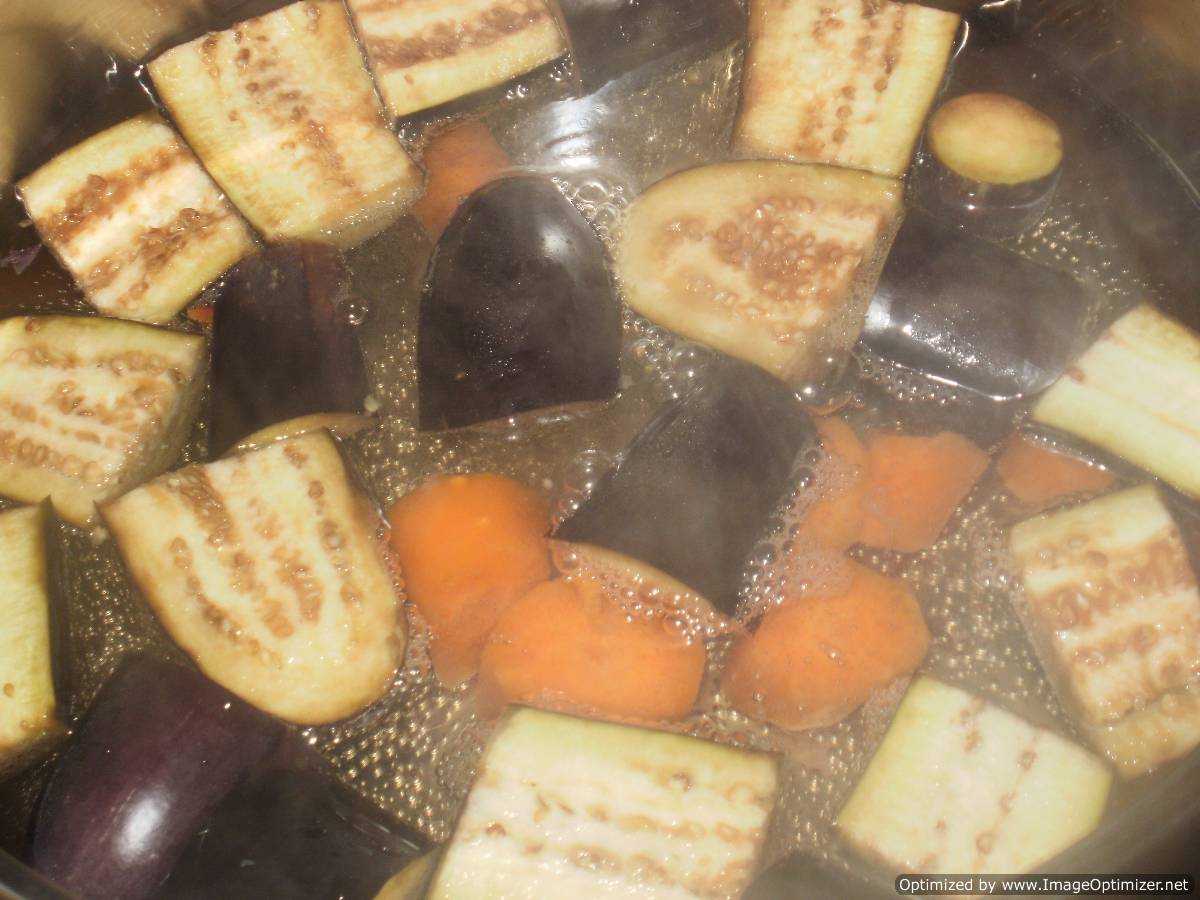Sambar is a south Indian dish common in Indian and Srilankan Tamil cuisines. Sambar is a vegetable stew made with vegetables, tamarind, toor dal and ground coconut paste.This is very popular in south Indian regions like Tamil nadu, Andhra Pradesh, Kerela and Karnataka. Each state prepares it differently with its own variation. Arachu vitta means freshly ground masala paste for the sambar. You can prepare sambar with ready made powder also. I use Shakthi or Aacchi brand. You can use variety of vegetables in sambar. The most commonly used ones are okra, drumstick, carrot, pumpkin, radish, brinjal, tomatoes and shallots.
Whenever I make sambar, I add ready made powder also with ground paste. But in this sambar I have not added ready made sambar powder.
You can serve more than 5 people with this recipe.
Enjoy it with idli, vada, dosa or plain rice.
In this sambar you can use any vegetables you like. You can see my other sambar recipes also. I always grind curry leaves with other spices for fresh sambar powder or masala but in this I have ground few coriander leaves also for more flavour instead of chopping it. This sambar also gives a different flavour and taste. You can prepare sambar with variety of vegetables using 2 to 4 vegetables of your liking
Ingredients
Masala paste
- Coriander seeds – 1 1/2 tbsp
- Chana dal (Bengal gram) – 1 tbsp or 3 tsp
- Cumin seeds - 1 tsp
- Dry chillies (long) – 6
- Methi seeds (fenugreek seeds) – 1/4 tsp
- Curry leaves – 8 to 10
- Coriander leaves – 1/3 cup
- Coconut grated – 1/4 cup or 5 tbsp
For boiling dal
- Toor dal (red gram dal) – 1/2 cup
- Water – 2 cups
For boiling vegetables
- Water – 2 cups
- Tomatoes - 2
- Brinjal – 3 (long)
- Carrots - 2
- Turmeric powder – 1 1/2 tsp
- Tamarind paste (concentrated) – 1 1/2 tsp
- Water (again) – 1 cup
Tadka (seasoning)
- Oil – 1 tbsp
- Hing (asafoetida) – 1/2 tsp to 2 pinches
- Mustard seeds – 1 tsp
- Dry chillies - 4
- Curry leaves – 15
- Shallots – 11 to 15
- Methi seeds (fenugreek seeds) – 1/4 tsp
Method
Boiling dal
- Boil dal in a cooker with water and 1 tsp oil and cook it. When it is cooked, let it cool down and then smash it well with a big round spoon. Keep it aside (do not add salt while cooking dal).
Roasting spices
- Now roast the masala (spices), add coriander seeds, cumin seeds, dry chillies and other ingredients. When roasting you can smell the heat, aroma and flavour. Stir well and after 1 min or when it changes colour, remove it and keep it aside. At last add coconut and switch it off. Mix all. Let it roast in a hot tava. When it gets cool, grind all the spices. You can add water if you want, but I have done it without water and left it little coarse powder. (No need to roast coconut, it will get roasted even after the heat is switched off)
Boiling vegetables and Tadka
- Chop the vegetables and keep it aside.
- Boil the vegetables first with other ingredients (add turmeric powder also) with the lid closed.
- When the vegetables are cooked, add tamarind paste. Mix well and cook until its rawness is gone.
- Now add dal and cook for a few minutes until it blends well (for 5 mins or more).
- Now add the ground powder. If it is thick add water as per requirement. Let it boil for about 5 to 7 mins. Then simmer for 10 mins. Good aroma comes when the ground masala and other ingredients blends nicely.
- After 10 mins, do the seasoning (tadka) in a separate pan and add to the sambar. Mix well and close the lid so that the aroma and flavour is well blended with sambar.
- The consistency of sambar should not be very thick or thin.
- Serve it with idli, rice or dosa with a few drops of ghee drizzled on top.
Notes
- Always taste and add salt accordingly.
- You can add jaggery (gud), according to your taste.
- You can use any vegetables as per your taste.
- If you want to reduce the dry chillies, then reduce as per taste.
- Stir the sambar in between, so that, it wont stick to the pan.
- Sometimes I add 2 garlic cloves, and 1/2 onion chopped while boiling dal and smash it well.
- During seasoning, I sometimes add 3 crushed garlic cloves in the oil and fry it so that more flavour comes.
- Add tamarind paste (TRS concentrated one) according to your taste. If you are squeezing tamarind and using its water, then add water in the sambar according to the consistency you need.
- If you want you can follow the previous methods.
- Toor dal is also known as arhar dal or yellow lentils.






















